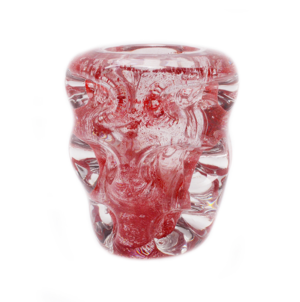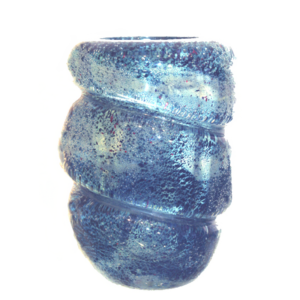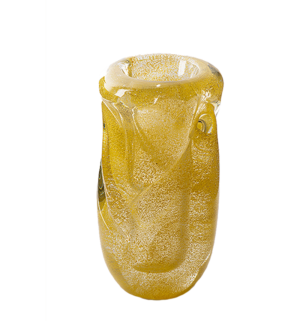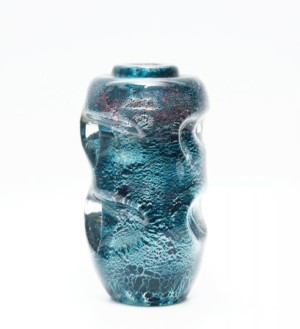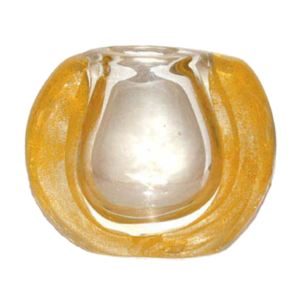(1898-1965)
André Thuret was born in Paris on the 3rd of November, 1898. He was the product of a traditional French “Bourgeoise” family, and his parents set high standards for him. He did not disappoint them, receiving a degree in Law in 1920 and a degree in Science in 1923.
André was fascinated by glass, and his first scientific experiments were in this medium. He was particularly interested in the molecular modifications of glass — more specifically, the properties exhibited by glass after heating and cooling. These experiments with glass would lead him to become one of the most renowned glass artists of the Twentieth Century.
His experiments aroused the interest of other glassmakers, and he was invited to the glassworks at Bagneaux, in the Somme, where he was named Engineer from 1922 to 1924.
It was in that year, 1924, that Thuret made his first piece of glass. This was quite probably a collaboration between himself and another great glass artist, Henri Navarre, who was at that point also beginning his career. Thuret, however, would take his experiments far beyond those of Navarre. This small, unsigned piece was sprinkled with metallic inclusions, and also had intricate patterns of bubbles in the manner of Maurice Marinot, the “father” of studio glass in France. It was an important departure from the current fashion in glass design, which was more interested in uniform colors. Thuret’s use of metallic and colored inclusions and controlled bubbles would become identifying features of his glass design.
Thuret worked hard in his atelier at Bagneaux, experimenting with new forms and colors, and his glass was exhibited at the Exposition Universelle des Arts Decoratifs, where he was presented with a diploma of honor. Over the next three years, Thuret continued to experiment with glass, publishing his results and teaching; yet still finding time to produce beautiful works of art.
In 1926, he became assistant and then Chief of Industry and Director of Laboratory at the Conservatoire des Arts et Métiers, and Chair of Chimie Appliquée aux Industries de la Céramique et de la Verrerie. Throughout the course of his career, Thuret held numerous prestigious posts which allowed him to continue his explorations of the properties of glass.
Thuret exhibited for the first time at the Salon d’Automne in 1928, and continued to exhibit his marvelous glass there every year thereafter. From this time on, he also began to regularly participate in national and international exhibitions, and was continuously recognized for his innovations in glass by critics who deemed his work simple, unpretentious and “characteristically French”, perhaps the highest compliment a Frenchman can be paid.
What made Andrè Thuret a genius as a glassmaker was his ability to combine his scientific knowledge with his artistic talents. From 1923 to 1930, Thuret perfected the technique of internally decorating his vases by rolling the glass on a marver covered in metallic oxides or “luster”. By 1925, these metallic inclusions began to resemble waves of color.
Thuret’s glass is characterized by a smooth surface; the shapes are simple but often sensuous, with curves full of movement that are enhanced by the changing effects of light. It was purposefully impure, full of bubbles and metallic flecks, which catch the light and bring life and sparkle to the pieces.
Thuret was very interested in color. Beginning in 1930, he became intent on coloring his once clear glass. Bright, floating clouds of color, created by adding various metallic particles, imbue his pieces with even more depth and beauty.
Around 1938, his glass becomes more “tortured”. He began to experiment with new forms, which led to his glass becoming more sculptural throughout the 1940s. It was during this time that Maurice Marinot’s influence on his work becomes most evident.
Although Thuret admired Marinot’s strict geometric designs, he was more inspired by the rounder and softer pieces that Marinot also created, and certainly got his inspiration to experiment with bubbles and metallic oxides from this aspect of Marinot’s oeuvre.
From 1940 to 1950, Thuret perfected new techniques. He began shaping the glass using iron pincers and other tools to alter the molten glass. He would first blow a parison of transparent glass into his desired form. He continued to use his earlier techniques of covering this layer with ground glass, or frit, which he sprinkled in the desired pattern on the marver. Finally, the piece was encased in another layer of clear glass. In this fashion, he was able to create the perfect synthesis of transparent glass on the outside, with beautiful colored glass on the inside.While his forms often remained simple, his colors were complex. Clouds of red, blue, violet, green, yellow, and pink in various intensities and combinations illuminate the glass from within.
By the 1950s, Thuret was concentrating on the fluidity of the heated glass, and continuing to mold pure shapes from the molten mass. His later pieces incorporated clear sections with internally decorates ones, creating a dramatic and elegant contrast.
Andrè Thuret experimented with glass for thirty five years. During this time, he conceived and created approximately 2,000 to 3,000 pieces, all unique and of exceptional quality. Many did not survive the years, but those that have can today be found in private collections and museums.
Showing all 6 results


